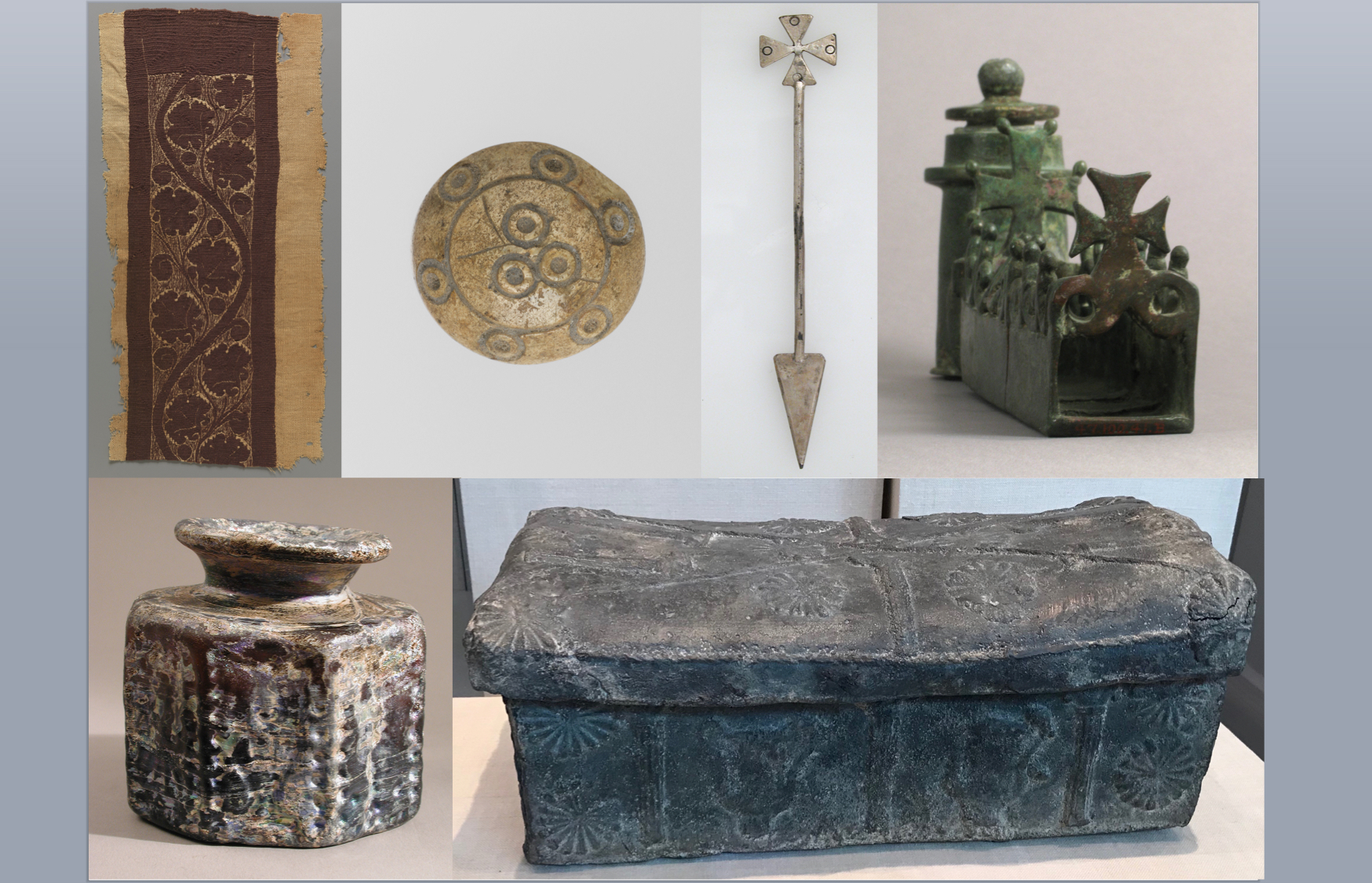In our last post we met Agatho, a silversmith who lived at the time of Augustus. At exactly the time Agatho died (c. 25 CE), Livia, the widow of Augustus, maintained a columbarium, a burial chamber, used exclusively for interring her own slaves and freedmen and those of her immediate family who lived in or near Rome (and not at their vast estates elsewhere). This facility, today called the Monumentum Liviae, was run by some of her Rome-based slaves and freedmen. The dead included three freed and two enslaved goldsmiths (aurifices), a silversmith (argentarius), an enslaved gilder (inaurator) who belonged to one of Livia’s freed smiths, and a margaritarius, who set her pearls in gold or silver. All of these precious metal workers were men, but there is a record of the burial at contemporary imperial columbarium, the Monumentum Marcellae, of an enslaved female silver-worker who belonged to an unspecified Augusta, probably not Livia. Here there were three more silversmiths and another named as a chaser or engraver (caelator), a silversmith who raised designs on metalwork or carved designs into them. Agatho is portrayed with the tools of the chaser, and a cup with a raised figure.[1]
As we can understand from this partial list of jobs, the production of silver goods was broken down into many sub-specialisms of greater and lesser skill. We have not so far mentioned others, like vascularii, who shaped sheet metal into forms; flaturarii, who cast and attached basic elements, like handles and bases; crustarii, who cast and attached more decorative elements; and tritores, polishers. We even have an account by St. Augustine of how silversmiths worked, a metaphor for polytheistic religion, where many gods looked after specialist areas.
“We laugh indeed when we see pagan gods distributed by the whimsy of human opinion to tasks divided amongst them, just like … craftsmen in the quarter of the silversmiths, where one vessel passes through the hands of many artisans in order to come out perfect, even though it could have been completed by one perfect artisan. But it was thought necessary for a multitude of artisans to be consulted for no other reason than this, namely so that each artisan might learn one part of an art quickly and easily, and so that they would not all be compelled, slowly and with difficulty, to become perfect in a whole art.”[2]
Augustine does not tell us about enslaved silversmiths, but we can be sure that four centuries after Agatho’s death, many such artisans were enslaved or freed. We know a great deal about slavery in Augustine’s time from his own writings, including a letter discovered in the 1980s that details the mechanics of the later Roman slave trade, describing “an endless river” of people.
We might imagine that slaves of the imperial household were relatively well cared for in life, since some care and thought was afforded to them in death. However, we should not doubt that most enslaved artisans led hard lives, frequently undertaking dangerous tasks in poor working conditions. They worked with materials and undertook processes that damaged their eyes and teeth, skin, hands and wrists, joints and backs, lungs and organs. Repetitive tasks caused fractured bones, joint deterioration and arthritis. Anyone working with metals risked serious burns, respiratory damage, and the many consequences of heavy metal poisoning. We shall return to this in our next post, looking at a single object and the health consequences of its production.
[1] D. E. Strong, Greek and Roman Gold and Silver Plate (Ithaca, NY: Cornell University Press, 1966), 7, 14-16. Strong also comments on the Guilds of Silversmiths in Rome and other cities, and the fact that Nero is supposed to have created 150-200 new buildings for a silversmiths quarter. On the Monumentum Liviae, see Susan Treggiari, “Jobs in the household of Livia,” Papers of the British School at Rome 43 (1975), 48-77, at 54-5, 68, and note 91. See also J. M. C. Toynbee, “Some notes on artists in the Roman world, 5: Metal-workers, gem-engravers and medallists,” Latomus 9/iv (1950), 389-94, at 390, for Protogenes and Zeuxis, two freedmen employed as silversmiths in Augustus’ household. Toynbee comments on the fact that many such artisans, like Agatho, had Greek names.
[2] Augustine, De Civ. Dei 7.4; cited by Cameron Hawkins, Roman Artisans and the Urban Economy (Cambridge: Cambridge University Press, 2016), 66. Pace Augustine, it is likely that a silversmith worked his way through the skills, as a trainee chef might in a kitchen, before settling on his specialism.
This is the second of three posts that formed part of a short lunchtime lecture delivered at the Humanities Institute, Pennsylavania State University, in February 2023.

